Seckel Pear Tree
Description
Also called sugar pear, candy pear
About the Seckel Pear Tree
The Seckel Pear Tree, often called the “sugar pear” or “candy pear,” is renowned for its bite-sized fruit and irresistible sweetness. These small, dessert-quality pears have a rich, honeyed flavor with a hint of spice, making them a favorite for fresh eating as well as cooking and canning. Their firm texture and natural sweetness also make them ideal for poaching, preserves, and elegant desserts.
An American heirloom variety, Seckel pears were first discovered near Philadelphia, PA, in the 18th century and remain a beloved choice for home orchards today. Known for its hardiness and resistance to fire blight, this tree is both dependable and highly productive. Fruit ripens in September, offering a late-summer harvest that can be enjoyed fresh or stored for later use.
How to Grow the Seckel Pear Tree
The Seckel Pear Tree thrives in full sun and well-drained soil, performing best in USDA Zones 5–8 with 500–800 chill hours. While the tree is self-fruitful, it yields better when planted near another pear variety for cross-pollination. However, note that Bartlett and Seckel do not pollinate each other. Regular pruning in late winter will help maintain shape, encourage air circulation, and ensure consistent fruiting.
With its unique size, heirloom history, and outstanding sweetness, the Seckel Pear Tree stands out as a premium choice for gardeners. Whether grown for fresh snacking, gourmet recipes, or small-batch preserves, it adds both charm and reliable harvests to any orchard.
Note: Not a suitable pollinator for Bartlett pear trees.
Survival Guaranteed!


Since 1816, Stark Bro’s has promised to provide customers with the very best fruit trees and plants. It’s just that simple. If your trees or plants do not survive, please let us know within one year of delivery. We will send you a free one-time replacement, with a nominal shipping fee of $9.99. If the item in question is not available, we can issue a one-time credit to your account equaling the original product purchase price or issue you a refund. Read more about our warranty policy.
Characteristics
| Bloom Color | White |
| Bloom Time | Early - Mid |
| Chill Hours | 500 - 800 |
| Fruit Color | Brown |
| Fruit Size | Small |
| Hardiness Zone Range | 5 - 8 |
| Pollination | Pollinator Required |
| Ripens/Harvest | September |
| Shade/Sun | Full Sun |
| Soil Composition | Loamy |
| Soil Moisture | Well Drained |
| Soil pH Level | 6.0 - 7.0 |
| Taste | Sweet |
| Texture | Fine Grained |
| Years to Bear | 4 - 6 |
Size & Spacing
Mature Size
| Standard | 18 - 20' tall x 12 - 13' wide |
| Semi-Dwarf | 12 - 15' tall x 9 - 11' wide |
| Dwarf | 8 - 10' tall x 6 - 7' wide |
Recommended Spacing
| Standard | 18 - 20' |
| Semi-Dwarf | 12 - 15' |
| Dwarf | 8 - 10' |
Zone Compatibility
Pollination
Tools & Supplies
Planting & Care
Learn all about how to grow pear trees in The Growing Guide. An entire section of our website dedicated to your growing success.
Shipping Information
Arrives when it's time to plant
Questions & Answers
They will serve to pollinate one another. Seckel is just about the only other variety that will.
I really do not know. I would go with Stark's recommendations, whenever possible. That is why I bought a moonglow also. Sorry.
That is correct. It is not pollen-sterile, but it does not pollinate well with all European pears, especially Bartlett and Anjou varieties/strains.
This is the opposite of what we experience. Our moon glow (which is a pollinating partner for one of our other Harrow pears) is first to bloom, with the Seckel coming a little later. However, we have also noted that subtle differences in where they are planted can make a big difference in timing. For example, we get snow drifting in some areas of the orchard, which slows down the bloom cycle for those trees. It just takes a while to melt that deeper snow--which keeps the soils cold. Obviously shaded areas make a difference, as does whether the planting area slopes to the north, which prevents direct sun exposure. Who knew there'd be this many variables? I'm not sure where you are located, we're still in snow. I usually prune a little late in the season (about now) to delay the bloom cycle so as to avoid the risk of losing the crop from late frosts. This means I have to pay extra attenion to insects (as it puts blooming later, and more into the spring bug cycle), but I do avoid frost damage. Next year, when the trees are a little bigger, I'm planning on grafting different types of pears onto the Seckel and Moon Glow (even just an even exchange) to test over the long haul whether placement is a deciding factor in bloom timing. The exchange will also give me protection against the loss of any one critical pollinating tree.
Yes, they will work together as pollinators.
We appreciate you reaching out to us. We do not have a guaranteed ETA on when more will become available. We are very sorry for this inconvenience and completely understand your disappointment. Rest assured, that if you sign up for a notification, you'll be one of the first to be notified when it becomes available again.
If you have any further questions please don't hesitate to reach back out to us, remember that we're here for you. Have a great day!
What are we talking about here? This looks like a photo of four pears still attached to a tree limb. A bushel is a measure of volume about the size of a laundry basket. Check the USDA canning guide on the Internet. They give the weight of various fruits,including pears,
per bushel as well as approximate number of fruit that represents as it relates to canning. The amount of fruit varies depending on size. And the Seckel is a fairly small pear, best for eating fresh or specialty cuisine including canning.
We appreciate you reaching out to us. We use several different rootstocks, depending upon the desired result and what is available. For that reason, we're unable to guarantee a specific rootstock.
If you have any further questions please don't hesitate to reach back out to us. Have a great day!
Even though Seckel pears are partially self-fertile, they produce much better fruit when cross-pollinated with another European pear variety like:
Bartlett
Moonglow
Starking Delicious
If your tree is blooming but not setting viable fruit, it may not be getting enough cross-pollination. The small, undeveloped fruits are likely aborted due to poor pollination.
🔍 What to check:
Do you have another European pear nearby that blooms around the same time?
Are bees and pollinators active in your yard when the Seckel is in bloom?
💧 2. Over-Fertilization (Too Much Nitrogen)
You mentioned fertilizing in spring and again in early summer, which may be too much—especially if using a high-nitrogen fertilizer. Excess nitrogen encourages lush leaf growth at the expense of fruit development and can cause immature fruit drop.
✅ Tip: Use a balanced fertilizer like 10-10-10 once in spring before bloom, then hold off. Adding compost or mulch instead of extra fertilizer can support healthier, more balanced growth.
☀️ 3. Sunlight and Air Circulation
Pears need full sun (6–8+ hours/day). If your tree is shaded or overcrowded, the fruit may form but not develop fully.
🍐 4. Natural Fruit Drop / June Drop
Pear trees often go through a natural thinning process (called June drop) where they shed excess or poorly pollinated fruit. If yours stays pea-sized and never progresses, it's likely not getting enough viable seeds inside—again pointing to pollination.
🐛 5. Pest or Disease Issues
Though not always the main cause, certain pests (like pear psylla or codling moth) or diseases (like fire blight or scab) can interfere with proper fruit development.
🔍 Check: Are the fruits shriveling, turning black, or falling off early? If so, send a picture and I can help diagnose it more specifically.
Customer Reviews
This company!!!!

 Options
Options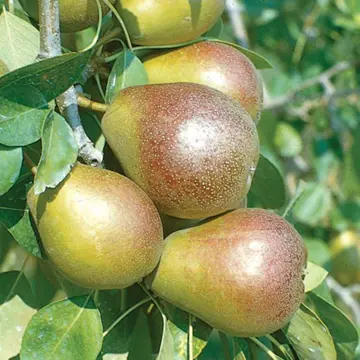
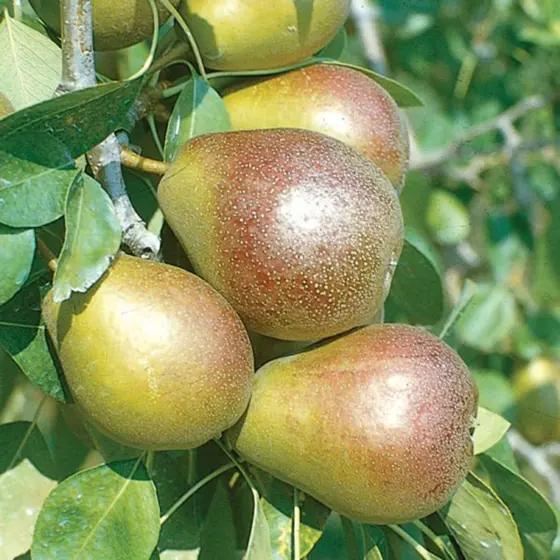
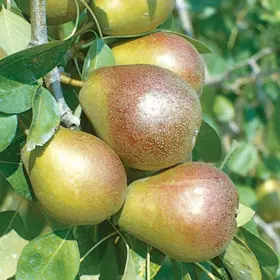
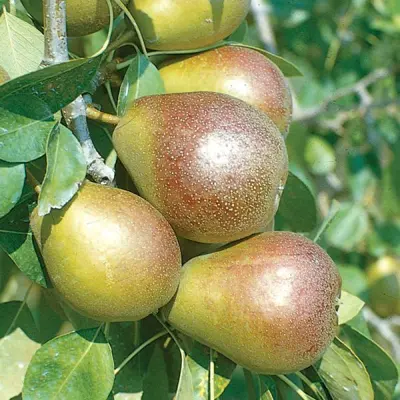
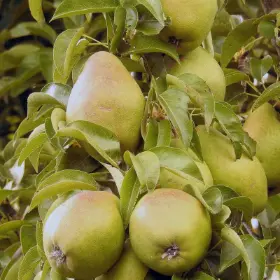
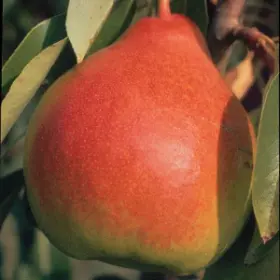

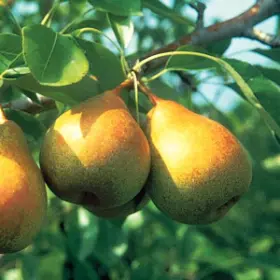
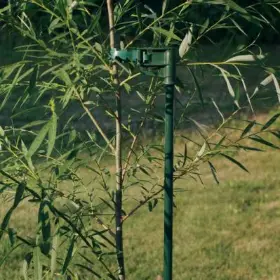
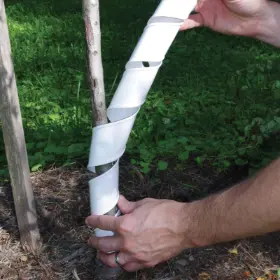
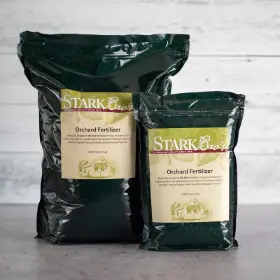
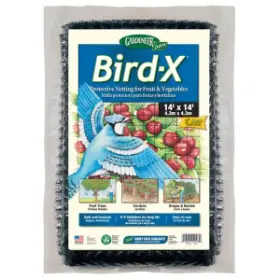
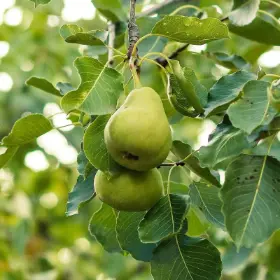
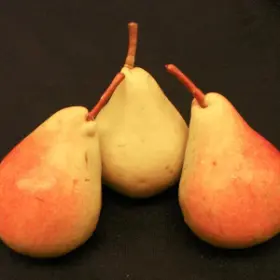

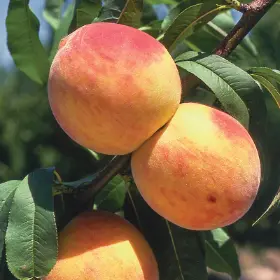
I have one from long ago and it has done well.
Great dessert fruit!
I chose this pear for its resistance to fire blight and low chill hours. As well, this pear is a great pollinator to Moonglow.
Best pear I have ever had.